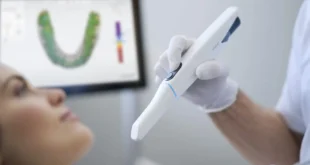The average person can have 6,500 thoughts per day or even upwards of 10,000. For anxious people, most of these thoughts are negative and come with expectations of the worst possible outcome.
It may be tempting to quiet these thoughts with an easy fix such as drugs or alcohol. But substance use comes with potentially poor consequences: It can contribute to bad decision-making, trigger mood swings, cause medical conditions, and in some cases lead to life-threatening addiction. (Learn how people are learning to successfully manage their anxiety without substances at FHE Health.)
What Is Chronic Anxiety and Its Dangers to Health

Meanwhile, though, the experience of thousands of anxious thoughts a day can also cause physical, emotional, and mental harm. Anxiety consists of negative thoughts as well as fears (for example, that one might get hurt, die, or lose a loved one).
These negative thoughts and fears can amp up the body to react as if it were responding to an existential threat. Once alerted to the danger, the nervous system triggers physical responses, such as rapid heartbeat, shortness of breath, sweating, shaking, pacing, muscle tension, etc. Racing thoughts, a symptom of general anxiety disorder, may cause insomnia. Poor sleep disrupts the workday, ruins mood, and increases the likelihood of accidents resulting in bodily harm.
The Problem with Drinking to Calm Anxious Thoughts
Physical responses to anxious thoughts can trigger the urge to drown one’s thoughts in alcohol. Alcohol is a depressant that is meant to relax and calm down the brain and body. Using alcohol to slow down, suppress, or ignore anxious thoughts may be a temporary fix. However, the more one uses alcohol or drugs, the more the brain craves these substances. That sets in motion more obsessive-compulsive thoughts about when and how to get the next fix.
Rather than use alcohol or drugs to quiet anxious thoughts, consider taking a break from them. Here are five healthy ways how to do that.
1. Keep a Daily Journal

Writing down anxious thoughts in a journal can help get the thoughts out of the mind and onto paper. Journaling allows one to process more rationally. The act of writing may help organize anxious thoughts and even challenge them when one sees them on paper.
Invest in a journal with a cover and pages that encourage relaxation and have a calming effect. Pick a time of day, especially before going to bed, to take five to ten minutes for journaling. Even better—create a gratitude journal to identify and record three things to be grateful for every day. Training the brain to find the good things in life can help combat the tendency to only see the bad things. A gratitude journal helps to reduce fears and worries by having a record of the evidence that more positive things happen in life than negative.
2. Meditate
Meditation is a spiritual practice that encourages connection with God and the universe to increase trust and faith. There are many different types of meditation. Keep it simple with a breath observation practice. Find a few minutes in a quiet area to sit and observe the air coming out of the nostrils.
Thoughts will come and go. Do not judge or attempt to squash them. Simply notice the thoughts and return to the observation of the breath as frequently as possible. This exercise can be a revealing illustration of how many thoughts occur in just a few minutes. Question the validity of thoughts: If they come and go so quickly, how real are they? This helps to give less focus to and reduce impulsive reactions to those anxious thoughts.
3. Use Thought Stopping

Thought stopping is a great technique for taking a break from anxious thoughts. Identify some of the thoughts that occur most frequently, causing anxiety, and write them down. Then develop statements to combat these thoughts, such as calming words or positive self-affirmations. When these anxious thoughts arise, consciously visualize a red “Stop” sign. Some people use a rubber band on their wrist to snap out of the thought spiral.
Getting up and walking around is another stopping technique. Once the thought has stopped, replace it with the healthy adaptive statement. Notice the emotional and physical relief that results from rational, supportive self-talk.
4. Practice Mindfulness
Mindfulness activities can help bring anxious people out of their thoughts to the present moment. Anxious thoughts may focus on the fear of a past, painful event happening again or may fixate with worry on the unknown certainty of the future.
Mindfulness brings the individual into the moment, where anxious thoughts disappear or recede into the background.
Purchase a mindfulness drawing book that encourages focus through the coloring of pictures. Drink tea, paying close attention to the process of making the tea, what the packaging is made of, how the tea leaves smell, what color they are, etc. Spend a few minutes sipping the tea noticing the sweetness and bitterness of it. Find other simple activities that help with focus and do one thing at a time slowly and purposefully.
5. Talk It Out

Anxious thoughts often dissipate when they can be released. Find a friend, family, or peer to talk to and ask that person to just listen to those thoughts and fears causing anxiety. Of course, therapists can be especially good resources in this arena as they are paid to listen. Sometimes support groups related to specific life issues can relieve the loneliness of being stuck in one’s anxious thoughts. Sponsors or mentors can help to process problems and encourage living in the present rather than one’s head.
These five ways to take a break from anxious thoughts are techniques that can bring both short- and long-term relief. And they come without the harsh consequences of using and abusing drugs and alcohol. With a little practice, even the most anxious person can learn that their anxiety isn’t permanent and that they can find healthy forms of relief.
This article was provided by Dr. Sachi Ananda, PhD, LMHC, MCAP, who directs a treatment program for first responders at the national behavioral health provider FHE Health and is a resource for news publications like USA Today on sex, relationship, and addiction issues.
 Hi Boox Popular Magazine 2025
Hi Boox Popular Magazine 2025



